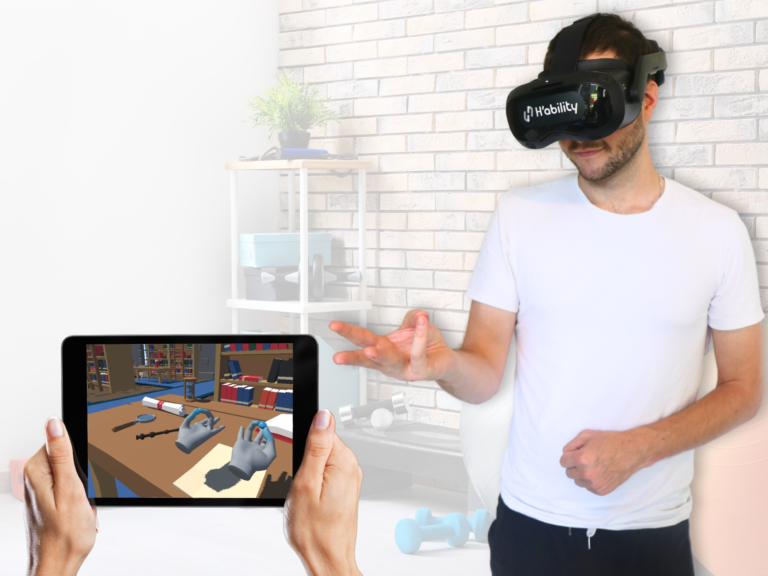Interview with Elizabeth, physiotherapist
Interview with Elizabeth, physiotherapist How did you become a physiotherapist? I've always been attracted to the health professions. I myself...

Today, the world of virtual reality continues to develop and offer new functionalities, allowing users to be immersed in an immersive, imaginary universe. Handtracking is a new technology in virtual reality, enabling users to dispense with the joysticks attached to their virtual reality headset, and interact directly with their hands.
Hand tracking allows to follow the movements, the speed but also the position of the user's hands, reproducing exactly the same gestures and the same actions through the virtual reality headset in real time. A pair of virtual hands is then created and integrated into VR applications so that the hands can be used and seen naturally.
To do this, the virtual reality helmet has several sensors that identify the shape of the hand, thanks to an artificial intelligence. It will then reproduce the hand with several important points, including the fingertips. More than 40 key points are then detected (about 20 for each hand), in order to reproduce exactly the same movements. The hands are then modeled, which allows the user to move, grab, click on a button or move objects virtually. The experience is intuitive, easy to use and even more immersive.
Thanks to this technology, H'ability has imagined a rehabilitation aid for patients who have lost their upper limb motor skills, with the aim of performing fun exercises and reducing pain. The patient is motivated and increases his chances of recovery.
The handtracking makes it possible to be free of any controller or sensor. It makes virtual reality accessible to a larger number of patients, especially those with grip difficulties, cognitive disorders or elderly people who are not used to using controllers.
The patient interacts with the virtual elements simply with his or her hands, thus stimulating movement more naturally. This reinforces the active rehabilitation of the patient in a simple and intuitive way. Thus, handtracking allows to propose an innovative approach in virtual reality, complementary to conventional rehabilitation.
Interview with Elizabeth, physiotherapist How did you become a physiotherapist? I've always been attracted to the health professions. I myself...
Interview with Baptiste, occupational therapist at Capucins How did you come to be an occupational therapist? Baptiste Mourant, occupational therapist: I've always wanted to...
Why did we choose the PICO 4 Enterprise headset for rehabilitation? At H'ability, every technological choice is aimed at improving...
H'ability raises 1.2 million euros to accelerate its development H'ability has issued a press release announcing that it has raised...